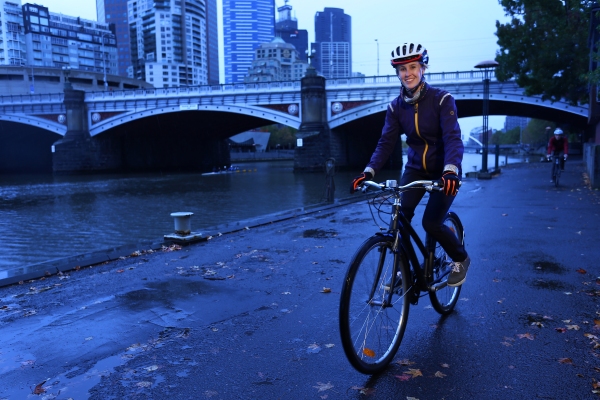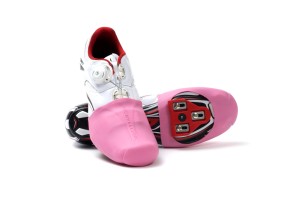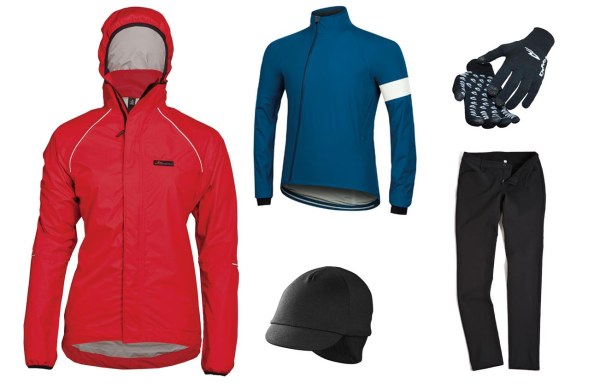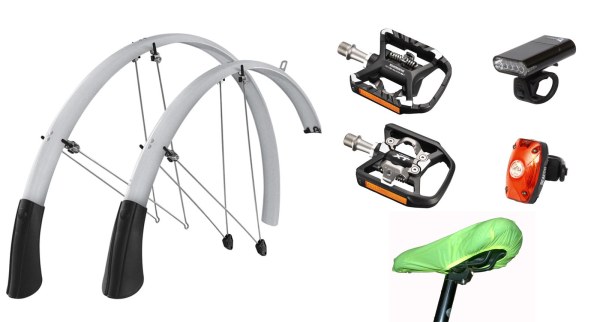In any weather: 30 tips for first-time winter commuters
Poor weather is no excuse to stop pedalling. Margot McGovern shares tips to keep you riding this winter.

I suffer from what my husband has diagnosed as Seasonally Often Feeling Tired (SOFT) disorder. When the temperature drops, I’m inclined to don my warmest flannel pajamas, curl up on the couch in front of the heater and remain there until spring. So while I love my bike, it’s tempting to leave it parked over winter and take public transport instead.
However, while it can be difficult, to keep motivated and riding through the cooler months, commuting by bike year-round is an ideal way to maintain and build fitness, with the added bonus of saving on train tickets, petrol and gym fees. And though you’re out in the elements when riding, a 2010 US study from Appalachian State University showed that regular winter exercise, such as bike riding, may reduce your risk of catching cold by almost half and minimise symptoms if you do get sick. So there’s really no excuse to keep you from riding over winter! With the right attitude, gear and a little know-how, winter commuting can be every bit as enjoyable and even more rewarding than summer riding.
Get motivated
Perhaps the biggest barrier to winter riding is finding the willpower to get away from the heater and onto your bike. You know you’ll feel great once you get rolling, but it’s easier said than done. Like any challenge, setting achievable goals is the key to staying motivated.
1. Sign up for a spring event, such as the RACV Great Victorian Bike Ride or Bupa Around the Bay. This will encourage you to use your commute as training and gives you a tangible fitness target to work towards.
2. If you’re like me and a bit of a sook when it comes to poor weather, don’t make yourself miserable by riding through hail storms or in gale-force winds and rain. Instead of riding five days a week and beating yourself up over missed days, aim for three and count extra rides as a bonus.
3. Put the money you save on your train fare towards a post-ride coffee or hot chocolate, or put it in a jar and see how much you can save by spring.
4. Recruit a riding buddy. It’s harder to give up when you know someone else is relying on you to ride with them.
Gear up
Having the right gear for both you and your bike is fundamental to a comfortable winter ride. Some riders aren’t fased by packing up and taking their clothes to work—others prefer to travel light. While investing in a whole new technical wardrobe for ease of travel to work may not be in the budget, there is a growing range of technical-yet-trendy commuter wear which can help deliver you dry and work-ready to the office.
Gear for you
5. Ironically, one of the biggest problems for winter commuters is overheating. A warm, waterproof jacket may sound like the logical garment to guard against cold and rain. However, rain jackets and coats are often cumbersome and don’t breathe well. Thin, breathable layers are more comfortable and can be removed as you warm up. I recommend starting with a merino base layer to wick moisture away from your skin.
6. A wind-proof vest or gilet will keep your core warm without restricting arm movement.
7. If you’re rugging up with a scarf, tuck the ends into your vest or jacket to avoid them flapping around and potentially getting tangled in the bike. Alternatively, opt for a neck gaiter or ‘snood’.
8. On rainy days, don a soft shell rain jacket, ideally with a longer tail to protect your behind from road spray, and mesh panels
or zippered vents for breathability.
9. Given your legs do most of the work they’re likely to warm up quickly. Leggings or stretchy water-resistant pants, such as Levi Commuter Jeans or the Outlier Daily Riding Pant are ideal.
10. Where possible, opt for outer layers with reflective details or invest in a reflective ankle strap or sash to increase your visibility in low
light conditions.
11. Your extremities are most likely to suffer the cold. Given they play a key role in controlling your bike, it’s important to keep them from going numb. Keep your hands warm with windproof gloves with good grip. For your feet, there are waterproof socks available, but they’re largely too warm for the Australian climate. Instead, opt for merino wool socks (two pairs when it’s cold) and invest in waterproof overshoes or toe covers, such as TwoWheelCool Toe Caps. They’ll protect your feet and shoes from wind, rain and road grit.
12. Opt for grippy shoes to prevent your feet slipping on wet pedals.
13. Complete your outfit with a skullcap, beanie or cycling cap under your helmet to trap heat and keep your noggin warm.
Gear for your bike
14. With winter’s shorter days, it’s likely that you’ll ride at least part of your commute in darkness. In low light conditions, you’re legally required to run a white, front-facing light and a red, rear-facing light visible from a minimum 200m. If you’re not sure which lights best suit your ride, check out the results from the 2014 Ride On lights test.
15. Be aware that high-powered lights can ‘blind’ other riders and pedestrians. If you use one, point it downwards to light your path and run an additional, regular light for added visibility if necessary.
16. Mudguards are a winter must-have. A full-length set will not only save your legs and backside from ‘road upchuck’, they’ll also prevent you spraying other riders.
17. If you plan to carry gear, a waterproof backpack or panniers are well worth the investment. To be doubly safe, store valuables in a zip lock plastic bag and carry and extra set of socks and jocks in a separate waterproof bag.
18. When locking your bike outdoors, save yourself a wet bum by protecting your saddle with a plastic cover (a shower cap will do the trick).
19. With more grit on the road in winter, chances of a puncture increase. Reduce your risk by switching to puncture-resistant tyres with a Kevlar strip or similar, and consider supplementing the air in your tubes with Slime—a sludgy green liquid that hardens upon contact with the air and will hold out until you get home to save you a tube change in foul weather.
20. If you’re running skinny tyres, it’s worth switching to something fatter and grippier to prevent sliding on wet roads. You can also increase grip by lowering your tyre pressure by 10 PSI. Also, check your tyres for debris at the end of each ride to minimise your puncture risk.
21. Running a clip-in pedal system will prevent your feet slipping off the pedals. If you’re not confident riding clipped in, opt for grippy pedals and shoes.
Roll out
As the weather changes, so do conditions on the road and you need to adjust your riding accordingly.
22. Slow it down. In winter the roads are often wet and cluttered with debris left over from storms. Puddles can conceal potholes. Surfaces may be slippery or muddy and low light conditions impair visibility. Lowering your cruising speed will give you more time to anticipate and react to unexpected obstacles.
23. On wet days, water and grit accumulate on your wheel rims, making it more difficult for the brake pads to grip. Begin braking early, lightly applying pressure to the brake levers to squeegee water from the rims. This will also minimise your risk of skidding out.
24. In wet weather, approach corners wide and slow to avoid slipping. Painted and metal surfaces, such as lane markings, grates and tram tracks, become slippery when wet. Approach these surfaces at a minimum of 45° and avoid braking until you’re safely across.
25. Keep your bike clean. In wet weather, mud and grit accumulate on the rims, chain and sprockets and wear down your brake pads and drivetrain. After mucky rides, rinse your chain and remove grit by running it backwards through a clean cloth, then use a second cloth to remove water and grit from your rims. To remove water trapped in your frame, tilt your bike to allow it to escape via drain holes typically located in the rear stays and/or fork, or by removing the seatpost.
26. While the dark affects visibility, bad weather and even the low angle of the winter sun can make it hard to see others on the road. Every road user has a responsibility to be aware of their surroundings whether walking, on a bike or driving a car. In these situations:
• Don’t be afraid to take the lane when there isn’t an unobstructed bike lane available. At traffic lights, position yourself in front of the traffic and look back to make eye contact with the driver behind to confirm they’ve seen you.
• Where possible, avoid queuing to the left of cars where you may be in the blind spot of left-turning traffic.
 Added extras
Added extras
27. Really foul weather rarely lasts. Check the Bureau of Meteorology website before you ride and, where possible, reschedule your ride to avoid particularly heavy downpours.
28. If you do get caught in a deluge, dry your shoes in time for the ride home by filling them with newspaper or Stuffitts
29. Keep your energy levels high. In winter you burn as much, if not more, energy and it’s important that you remember to drink plenty of water and keep a supply of healthy snacks on hand.
30. If you really feel the cold, put your bike on an indoor trainer or jog in place indoors to warm up before hitting the road.
While it can be hard to leave the house on cold mornings, being equipped with the right gear and adapting your attitude and riding style to the conditions makes commuting in poor weather both doable and enjoyable.
Ride On content is editorially independent, but is supported financially by members of Bicycle Network. If you enjoy our articles and want to support the future publication of high-quality content, please consider helping out by becoming a member.










My friend bought a cycling poncho in China thatnhas clips that attach to the handlebars therefore keeping the legs dry in a deluge. The thing I like about a poncho is, they never get sweaty.
Like the poncho idea Rhonda.
I found Gore tex trail runners are good idea they keep your feet dry and warm in the winter I wear Vasque trail runner shoes but other brands are available.
My winter gear = cheap waterproof non breatheable shell, keeps u warm and dry, gloves, reflective water proof bag cover. Done. And if its raining sideways PT.
I commuted for 5 years and always had cold feet and hands. My brain kicked in the in the final year when I realized I was putting cold feet into cold shoes and cold hands into cold gloves. By keeping everything warm at the start my hands and feet stayed warmer for longer.
Dave
Reblogged this on Owain Matthews and commented:
Great ideas for those Winter commutes
Disk brakes stop you reliably and consistently in the wet, so if you happen to be about to buy a commuter bike…
It advises not to ‘make yourself miserable by riding through hail storms or in gale-force winds.’ But what if you live in a town where gale force winds are more often than not, and in winter are coming off the southern snow fields?
…or just get on your bike and ride…
I can totally recommend bar mitts (fab for the sub-zero Canberra mornings) and Shimano Winter Riding boots with neoprene ankle cuffs with merino socks. Forget the waterproof socks, they sweat on the inside and then freeze up when it gets really cold.